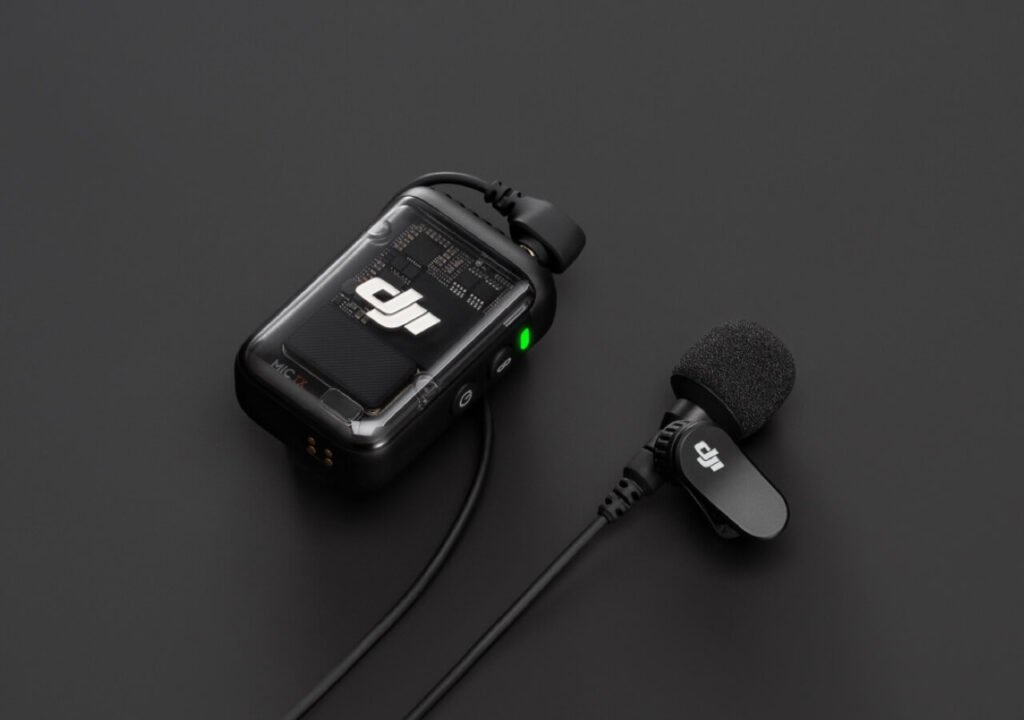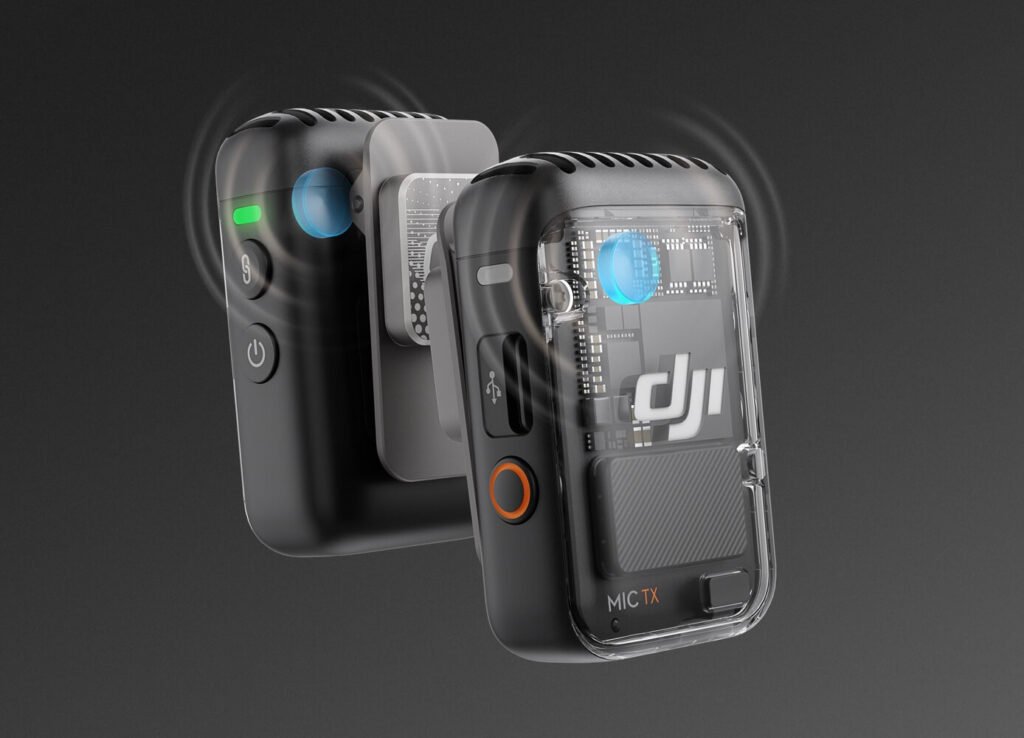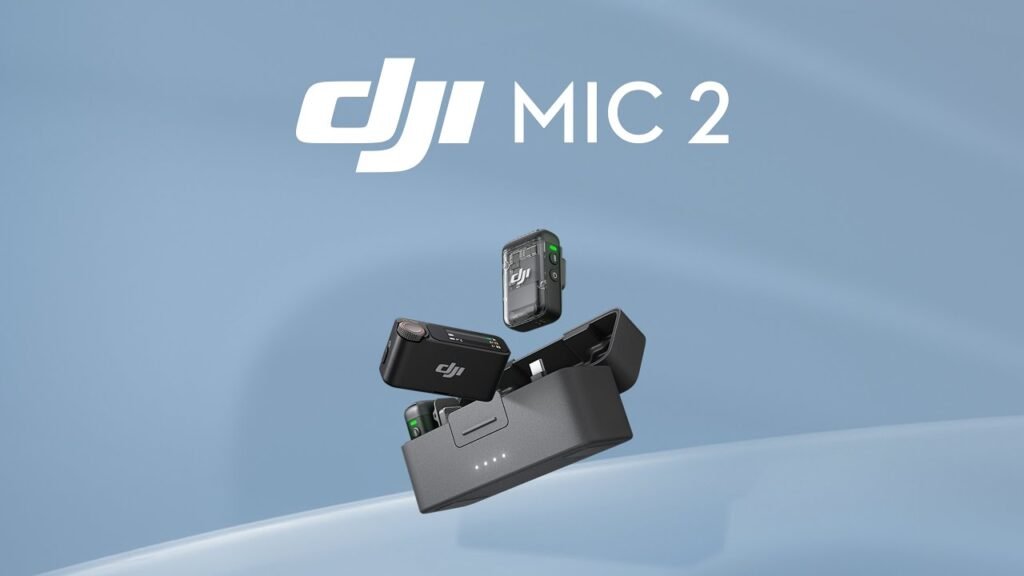DJI recently unveiled the Mic 2, a newly upgraded wireless microphone that also serves as a transmitter. Packed with features like intelligent noise canceling, Bluetooth connectivity, extended battery life, and advanced 32-bit float recording, the Mic 2 is a promising device. Our hands-on review aimed to determine if the added functionalities justify its cost.
We experimented with the double-sender pick including a charging box and a camera-ready, two-channel receiver. It provides all the essentials for capturing simple two-person conversations. The Mic stands out as a top choice for vloggers and streamers due to its straightforward setup. The price for this bundle is P19,000.

The Receiver
The DJI Mic 2 RX receiver connects to cameras as well as iOS and Android devices. The kit comes with a 3.5 mm camera audio cable as well as both a Type-C and a Lightning mobile phone adapter. That means the DJI Mic 2 comes ready to use with a wide variety of setups. The RX is light and compact enough to easily mount camera-top. It features a bright OLED display as well as a tactile dial for level adjustment. Plus, in addition to the main output, there is also a headphone out for audio monitoring.

All-in-one transmitters
Guess what else the package has? Yup, two TX clip-on mics that can each chat away for 14 hours without needing a buddy pack.
The DJI Mic 2 kit offers windscreens for each microphone, but to take noise reduction even further, the mics also offer intelligent noise canceling to actively reduce background noise. Also new to the Mic 2 is 32-bit float internal recording. This gold standard in audio recording accommodates a much wider dynamic range, effectively preventing clipping and distortion from unexpected jumps in volume.
DJI guarantees that the remotes will function well within a range of 820 feet of the main unit, but our own trials presented contrasting results. Details to follow.
Each unit has built-in rechargeable batteries that last around six hours per charge. Paired with the charging case, the DJI Mic 2 can record in the field for up to 18 hours. It takes around an hour and 10 minutes to recharge the transmitters and receivers using the charging case. For the charging case itself, it takes around two hours and 40 minutes to charge up fully.

Testing
We wanted to see how things went down while strolling from 0 to 300 feet in a straight line of sight. Our chat got interesting as we dodged cars to test the signal. To spice it up, we walked to the building’s far side, pondering what obstacles do to a signal.
The DJI Mic 2 system worked well with the transmitters up to 200 feet away. That’s not bad, but it’s a far cry from the promised 820 feet DJI claims. The system also struggled when anything came between the transmitter and receiver when past 125 feet. That includes even just the body of the subject, making it unreliable in certain situations. Our tests also revealed that the Mic 2 transmitters do not work at all when the receiver is not in the line of sight. Keep that in mind as you plan your shoots.
During our review, we also experimented with the optional lavalier microphone. Interestingly, its main advantage lies in discreetly concealing the microphone rather than enhancing audio quality.

Strengths and weaknesses
With tests concluded, there were a few strengths and weaknesses of the DJI Mic 2 that really stood out. First up, the DJI Mic 2 features 32-bit float internal recording in addition to the standard 24-bit recording. This is a great feature and one of the big upgrades from the original DJI Mic. 32-bit float recording allows you to capture dynamic scenes with unpredictable audio levels without having to ride the gain knob. The extra eight bits of amplitude information make room for sudden volume changes, meaning your audio won’t get clipped or distorted if your talent suddenly shifts from a whisper to a shout.
Recording enthusiasts will appreciate the DJI Mic 2 for its extended battery life of up to 18 hours with the charging case. Moreover, its Bluetooth compatibility allows seamless connections with devices like DJI Osmo Action 4 and various smartphones, making it a versatile choice for recording on the go.
Yet, this takes us to a snag with the system — darn Lightning adapter broke after just a few uses. Plainly put, we hoped for a tougher build here.
One more issue we have is the DJI logo being too prominent on the transmitters. If you prefer a discreet microphone, you could think about adding the optional DJI Lavalier to what you already have.
Marketplace
Competing most directly with the DJI Mic 2 is the RØDE Wireless Pro wireless microphone system. Like the DJI Mic 2, the Wireless Pro offers compact all-in-one transmitter/recorder microphones capable of capturing 24-bit and 32-bit float audio. However, the Wireless Pro beats out the Mic 2 in terms of both battery life — seven hours — and record time — over 40 hours internally. The Rode system is also slightly more expensive at just under P21,000.

Final thoughts
The DJI Mic 2 offers several improvements over the original model, including 32-bit float recording, longer battery life and intelligent noise cancellation. However, its real-world performance falls short of DJI’s advertised range, and the fragility of the Lightning adapter raises concerns about durability. While the Mic 2 is a solid option for content creators with straightforward needs, its limitations and price point may make competitors like the RØDE Wireless Pro a more attractive choice for certain users. Ultimately, the decision comes down to individual priorities and budget.
